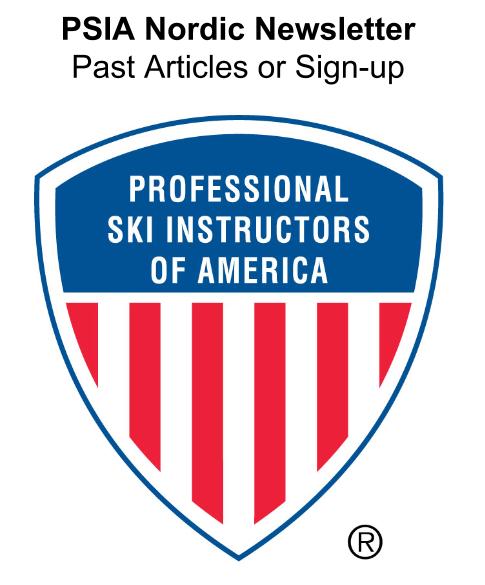The 4 Elements of Uphill Skate Skiing You MUST Master!
/Are you like many skiers? Do you blame your struggle to climb hills on your lack of fitness. Of course, fitness does play a role in your ability to climb hills without fatiguing. However, your TECHNIQUE usually plays a MUCH greater role. Fortunately, you only need to focus on 4 principles to become a hill climbing beast despite your fitness level.
At the start of my on snow clinics, what do you think most skate skiers answer when I ask, "What do you want to work on today?"
The answer: "I want to get more efficient skating uphill."
You might relate to the universal want and focus of many skate skiers, gliding up and over the hills and climbs of the trail without turning into a sweaty, drippy mess panting and slobbering like a St. Bernard dog.
Generally, most skiers blame their struggle to climb hills on their lack of fitness. Of course, fitness does play a role in your ability to climb hills without fatiguing. However, your TECHNIQUE usually plays a MUCH greater role.
I believe skiers use fitness like the ancient Hebrews used a goat during the day of atonement - to pile misdeeds, misunderstanding and blame on the "proverbial" back of someone or something else.
Using fitness as a scapegoat absolves skiers from confronting the foundational problem.
In most cases, the foundational problem to skating uphill is technique, not fitness.
Fortunately, you only need to focus on 4 principles to become a hill climbing beast despite your fitness level.
Principle 1 - Extension Glide
The first primary principle I teach skiers to master for more effortless glide uphill involves learning how to extend your legs for more glide.
To "feel" the concept, imagine yourself skate skiing uphill without poles. As you ski, keep your upper-body and hips completely still, not allowing your upper body or hips to move left or right. You should look and feel completely stuck in the middle, without any weight transfer while you ski.
Remember, this is NOT how to ski, but only a drill to help you feel a concept and master a primary principle of uphill skate skiing.
To get glide without weight transfer, land on your glide ski then extend your leg away from you. This move, extending your leg and pushing your ski forward and diagonal to create glide, I call "extension glide."
Simply by pushing your ski across the snow, you get glide.
Try to isolate the movements required to keep your upper-body still while your lower body does all the work.
TIP: to make any of these 3 principles work for you uphill, you need to nail your body position. Many skiers lean to far forward from the waist while skating uphill. Instead, stand with your upper-body more upright (legs bent). You should seek while mastering the principle a shoulder, hip, ankle alignment.
Principle 2 - Weight Transfer Glide
Not only can you create glide simply by extending your leg, you can access more glide by transferring your weight.
To "feel" the concept of "weight transfer glide," imagine skate skiing uphill like you did for extension glide. This time, keep your legs bent and flexed, they should feel rigid the whole time you ski without any leg extension. In other words, try NOT to push yourself with your legs uphill.
Remember, this is NOT how to ski, but only a drill to help you feel a concept and master a primary principle of uphill skate skiing.
Try this: while standing still, rock back and forth between your feet completely transferring your weight from ski to ski while keeping your legs bent.
Once you feel yourself weight transferring without leg extension, basically "falling" side to side, foot to foot like a penguin waddling across the Arctic tundra, try falling, waddling, weight transferring on flexed, rigid legs forward and diagonally down the trail.
Notice how you create propulsion without leg push. Instead, propulsion comes solely through weight transfer.
Extension Glide & Weight Transfer Glide
Before moving onto the next principle, pole glide, I want you to combine the first two principles. Imagine skating uphill this time combining your ability to create glide uphill by extending your leg, pushing the ski uphill across the snow WHILE adding weight transfer to your skis.
You must understand that you can access more glide simply by extending your leg and transferring your weight. These, in my opinion, are the TWO primary ingredients to effortless uphill glide.
Principle 3 - Poling
After combining the first two principles, now you should add the poles. Be careful, many skiers get tired on the hill and use their poles to CREATE GLIDE. Use your poles to compliment and enhance glide, not create glide.
Add poles to your skate skiing first by holding the poles along the shaft with your fingertips. I call this "fingertip poling." Holding your poles with your fingertips ensures you do not over pole your extension glide and weight transfer glide. Remember, poles compliment and enhance glide!
Next, hold the pole handles but don't put the pole straps on. Try poling with easy movements, letting your legs and your weight transfer do most of the work.
Finally, add the poles.
Experiment
The three principles above are easy to understand, but require a great deal of attention to master.
A true "expert" skier masters the fundamentals. Creating glide through leg extension and weight transfer, complimenting that glide with poling, are the fundamentals to uphill skate skiing.
The expert then can apply various speeds and forces to his or her movements, to ski fast or slow uphill.
So, after practicing the fundamentals, try changing your tempo, go fast, go slow while blending the three principles!




